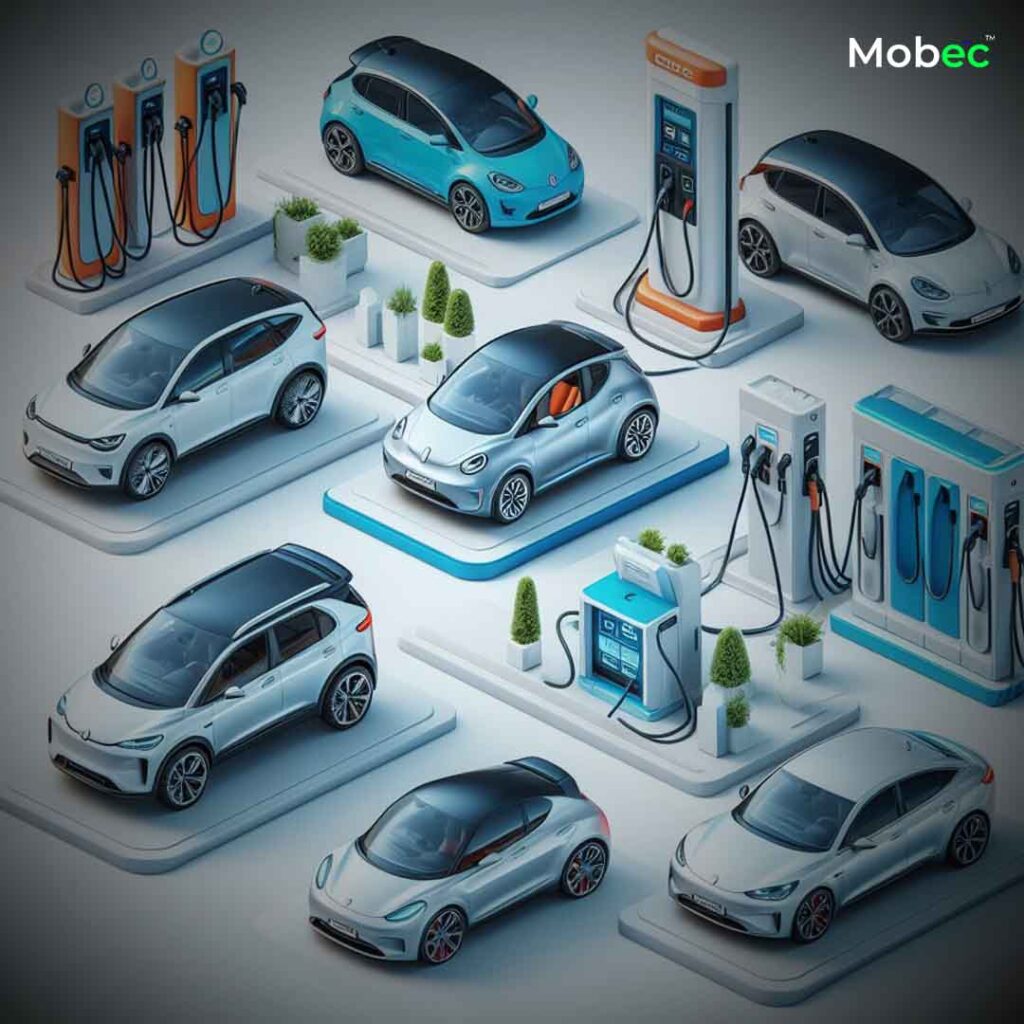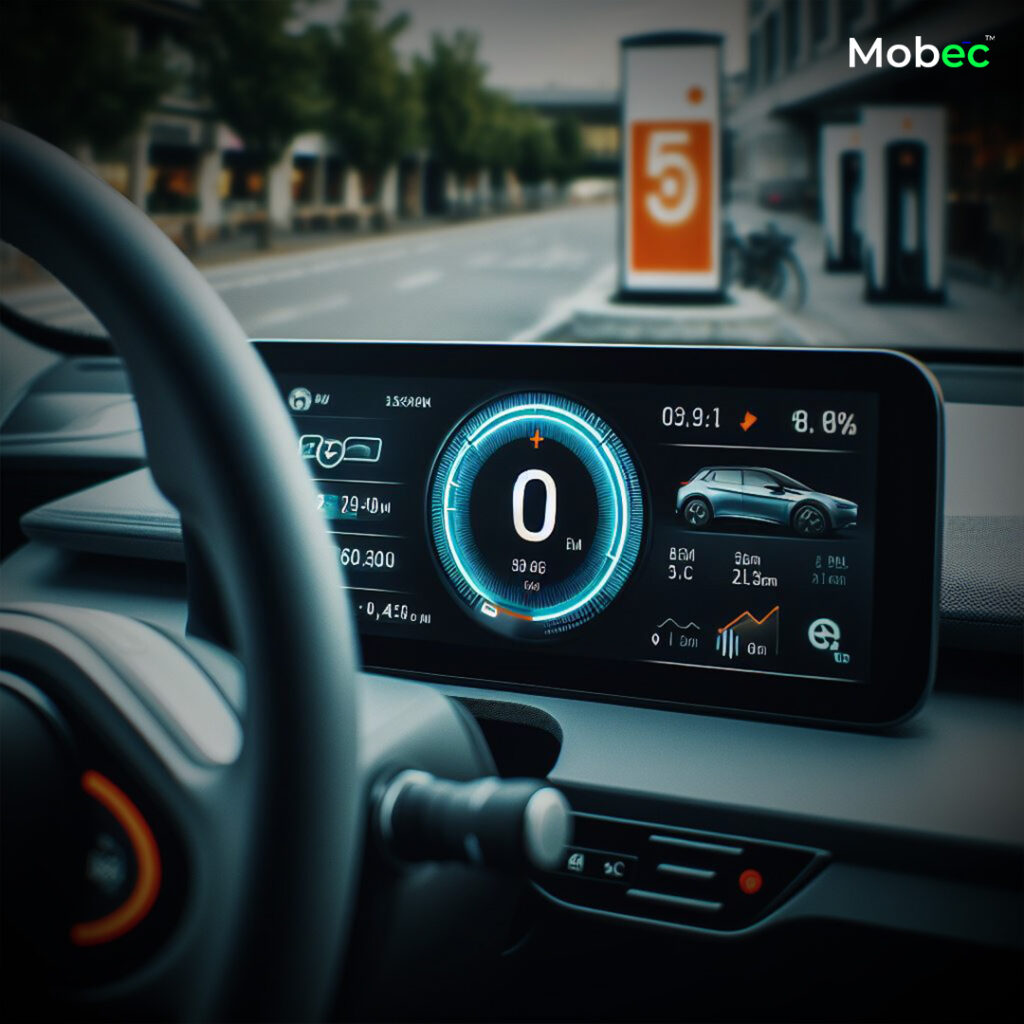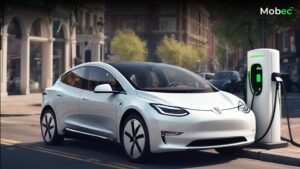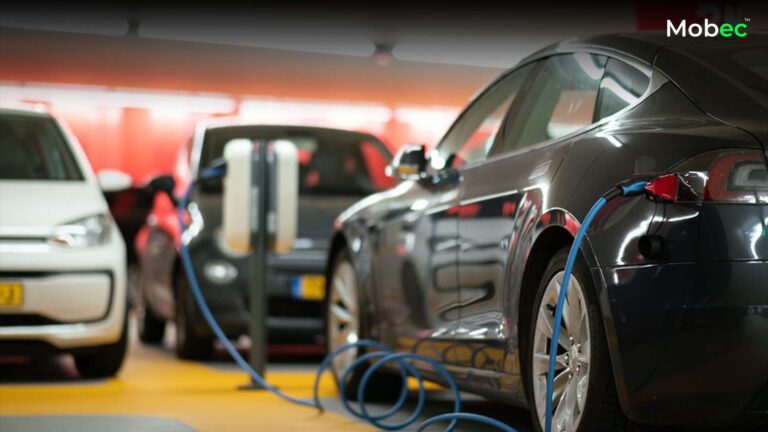The transition to electric vehicles (EVs) is reshaping the automotive industry and revolutionizing the way we think about transportation. At the heart of this transformation is the charging infrastructure, a network of charging stations that powers the growing fleet of electric vehicles. In this in-depth exploration, we delve into the critical role of charging stations for electric vehicles, examining their significance, types, and the evolving landscape that is shaping the future of sustainable mobility.
The Rise of Electric Vehicles:

- Electric Vehicles: A Sustainable Future:
The increasing awareness of environmental issues and the pursuit of sustainable living have propelled electric vehicles into the spotlight. Electric cars, with their zero-emission capabilities and reduced dependence on fossil fuels, have become a key component of efforts to mitigate climate change and reduce air pollution in urban areas.
- Zero Emissions and Clean Energy:
Electric vehicles produce zero tailpipe emissions, contributing to improved air quality and reduced greenhouse gas emissions. The transition to electric mobility aligns with global goals to combat climate change and create a more sustainable future.
- Advancements in Battery Technology:
Technological advancements in battery technology have played a pivotal role in enhancing the viability of electric vehicles. Improved energy density, longer ranges, and faster charging capabilities have addressed some of the initial challenges associated with electric mobility.
- The Need for a Robust Charging Infrastructure:
As electric vehicles gain popularity, the need for a robust charging infrastructure becomes paramount. Charging stations for electric vehicles form the backbone of this infrastructure, providing a network that enables EV owners to charge their vehicles conveniently and reliably.
- Overcoming Range Anxiety:
Range anxiety, the fear of running out of battery power before reaching a charging station, has been a significant concern for potential electric vehicle owners. The strategic placement and expansion of charging stations play a crucial role in alleviating this anxiety, making electric vehicles more appealing and practical for daily use.
- Promoting EV Adoption:
A widespread and accessible charging infrastructure is a key driver for the mass adoption of electric vehicles. The availability of charging stations fosters confidence among potential EV owners, assuring them that they can charge their vehicles conveniently, whether at home, at work, or during travel.
Types of Charging Stations for Electric Vehicles:

A. Home Charging Solutions:
- Level 1 Charging:
Home charging is the most convenient and accessible way for electric vehicle owners to charge their cars. Level 1 charging utilizes a standard household outlet (120 volts) and is suitable for overnight charging. While it is the slowest charging option, it is practical for daily charging needs.
- Level 2 Charging:
Homeowners can opt for Level 2 charging stations, which operate on a 240-volt power supply. This significantly reduces charging times compared to Level 1 charging and is suitable for overnight charging as well as daytime top-ups.
B. Workplace Charging Stations:
- Supporting Employee EV Adoption:
Many workplaces are installing charging stations to encourage employees to adopt electric vehicles. Workplace charging stations, often Level 2, enable employees to charge their vehicles during working hours, contributing to the overall adoption of sustainable transportation practices.
- Convenience for Commuters:
Workplace charging stations benefit employees who commute using electric vehicles, offering a convenient and reliable source of charging during the workday. This accessibility addresses the charging needs of individuals without access to home charging solutions.
C. Public Charging Stations:
- Level 2 Public Charging:
Public charging stations are strategically located in urban areas, shopping centers, and other high-traffic locations. These Level 2 stations offer faster charging compared to home charging, making them suitable for quick top-ups during errands or activities.
- Fast-Charging Stations:
Fast-charging stations, also known as Level 3 or DC fast chargers, provide a significantly quicker charging experience. These stations are typically found along highways and major travel routes, catering to electric vehicle owners embarking on longer journeys.
High-Power Charging Stations:
- Ultra-Fast Charging:
High-power charging stations represent the latest frontier in charging technology. These ultra-fast chargers deliver high amounts of power, significantly reducing charging times. They are crucial for addressing the demand for quicker charging experiences, especially during long-distance travel.
- Tesla Supercharger Network:
Tesla has pioneered its Supercharger network, a proprietary high-power charging infrastructure designed specifically for Tesla vehicles. These stations are strategically placed to facilitate long-distance travel and contribute to the overall convenience of owning a Tesla electric car.
The Importance of Strategic Charging Station Placement:

Urban Centers and Residential Areas:
- Supporting Urban Electric Mobility:
Strategically placing charging stations in urban centers and residential areas is essential for supporting electric mobility in densely populated areas. These stations cater to residents without dedicated parking spaces or those living in apartments, offering a reliable charging solution close to home.
- Encouraging EV Ownership in Cities:
Charging stations in urban areas contribute to the encouragement of electric vehicle ownership in cities. Accessibility to charging infrastructure addresses the unique challenges posed by city living, making EVs a practical choice for urban dwellers.
Highways and Travel Routes:
- Facilitating Long-Distance Travel:
Charging stations along highways and major travel routes are strategically placed to facilitate long-distance travel for electric vehicle owners. These stations provide a crucial link, enabling EVs to embark on journeys beyond the typical daily commute range.
- Reducing Range Anxiety:
The placement of charging stations along highways is instrumental in reducing range anxiety—a significant psychological barrier for potential electric vehicle adopters. Knowing that charging infrastructure is readily available during travel encourages drivers to embrace electric mobility with confidence.
Recreational and Tourist Destinations:
- Supporting Sustainable Tourism:
Charging stations at recreational areas and tourist destinations support sustainable tourism. Electric vehicle owners can explore scenic routes and attractions without worrying about charging availability, contributing to the growth of eco-friendly travel.
- Hotels and Restaurants:
Installing charging stations at hotels and restaurants enhances the appeal of these establishments to electric vehicle owners. Travelers are more likely to choose accommodations and dining options that offer convenient charging solutions, contributing to the overall experience of sustainable tourism.
Technological Advancements in Charging Stations:
Wireless Charging Technology:
- Streamlining the Charging Process:
Wireless charging technology eliminates the need for physical cables, streamlining the charging process for electric vehicle owners. As this technology advances, wireless charging could become a standard feature in dedicated charging stations.
- Inductive Wireless Charging:
Inductive wireless charging uses electromagnetic fields to transfer energy between the charging station and the electric vehicle. This technology is evolving to offer a more convenient and user-friendly charging experience.
Smart Charging Solutions:
- Optimizing Energy Consumption:
Smart charging solutions leverage technology to optimize energy consumption during charging sessions. These systems can prioritize the use of renewable energy sources when available and communicate with the electrical grid for efficient and sustainable charging.
- Grid Integration and Load Management:
Smart charging solutions contribute to grid stability by integrating with the electrical grid and managing the load on the grid during peak demand periods. This ensures that charging infrastructure operates efficiently without overburdening the grid.
Bidirectional Charging (V2G Technology):
- Supporting Grid Stability:
Vehicle-to-Grid (V2G) technology enables bidirectional energy flow between electric vehicles and the electrical grid. Electric vehicles can not only draw power from the grid but also return excess energy back to it, supporting grid stability and resilience.
- Potential Revenue Stream for EV Owners:
V2G technology opens the possibility of electric vehicle owners earning revenue by participating in grid services. During periods of high demand, EVs can supply stored energy back to the grid, creating a potential financial incentive for owners.
Considerations for Sustainable Charging:
Renewable Energy Integration:
- Solar-Powered Charging Stations:
Charging stations powered by solar energy harness the sun’s power to generate electricity for electric vehicles. This integration of renewable energy sources aligns with the sustainability goals of electric vehicle owners and contributes to a greener charging infrastructure.
- Wind-Powered Charging Solutions:
Wind turbines can be integrated into charging station designs to generate clean energy for electric vehicles. Wind-powered charging solutions offer a renewable and eco-friendly alternative, particularly in areas with favorable wind conditions.
Energy Storage Solutions:
- Battery Storage for Charging Stations:
Integrating energy storage solutions with charging stations allows for the storage of excess energy generated during low-demand periods. This stored energy can be utilized during peak demand, contributing to a more balanced and efficient charging infrastructure.
- Reducing Strain on the Grid:
Energy storage solutions mitigate the strain on the electrical grid by providing a buffer against sudden spikes in demand. This enhances the reliability of charging stations and reduces the impact on the grid during periods of high electric vehicle adoption.
Government Initiatives and Incentives:
- Funding for Charging Infrastructure:
Governments around the world are recognizing the importance of charging infrastructure in supporting electric vehicle adoption. Many countries offer funding and incentives to businesses and municipalities to install and expand charging station networks.
- Grant Programs and Subsidies:
Grant programs and subsidies encourage the installation of charging stations by providing financial support to businesses and local authorities. These incentives play a crucial role in the rapid expansion of charging infrastructure.
- Public-Private Partnerships:
Public-private partnerships facilitate collaboration between governments and private entities to deploy charging infrastructure. This joint effort addresses the financial and logistical challenges associated with building a comprehensive charging network.
Regulatory Support:
- Standardization of Charging Infrastructure:
Regulatory bodies play a role in standardizing charging infrastructure to ensure compatibility across different manufacturers and models. Standardization promotes interoperability, allowing electric vehicle owners to use various charging stations seamlessly.
- Building Codes and Zoning Regulations:
Governments may implement building codes and zoning regulations that encourage or mandate the inclusion of charging infrastructure in new constructions. This proactive approach supports the future growth of electric mobility.
The Future of Charging Stations for Electric Vehicles:
Advancements in Charging Technology:
- Ultra-Fast Charging Stations:
The evolution of charging technology is heading towards ultra-fast charging stations capable of delivering over 300 kW of power. These stations aim to significantly reduce charging times, making electric vehicles even more competitive with traditional internal combustion engine vehicles in terms of refueling speed.
- 800V Charging Systems:
The adoption of 800-volt charging systems by some electric vehicles represents a step towards ultra-fast charging. These systems allow for faster charging without increasing the current, paving the way for more efficient and rapid charging experiences for electric car owners.
Integration with Smart Cities:
- Smart City Infrastructure:
Charging stations will become integral components of smart city infrastructure. As cities embrace interconnected technologies, charging stations will play a role in optimizing energy use, reducing emissions, and enhancing the overall efficiency of urban transportation.
- Internet of Things (IoT) Integration:
The Internet of Things (IoT) will play a significant role in the future of charging stations. IoT-enabled charging infrastructure can provide real-time data on station usage, energy consumption, and equipment health, allowing for proactive maintenance and improved user experiences.
V2X (Vehicle-to-Everything) Connectivity:
- Enhanced Grid Integration:
V2X technology goes beyond V2G, encompassing communication between electric vehicles and various elements of the urban infrastructure, including traffic lights and other vehicles. This connectivity enhances grid integration, traffic management, and overall urban mobility.
- Improving Traffic Flow:
V2X connectivity enables electric vehicles to communicate with traffic management systems, optimizing traffic flow and reducing congestion. This not only enhances the efficiency of urban transportation but also contributes to lower energy consumption.
Conclusion:
The role of charging stations for electric vehicles extends beyond mere refueling points; they are the linchpin of a sustainable and transformative mobility revolution. From home charging solutions to high-power charging stations, the infrastructure supporting electric vehicles is continually evolving. As governments, businesses, and technology developers collaborate, the charging landscape is poised for unprecedented advancements. The strategic placement of charging stations, integration with smart city initiatives, and the incorporation of renewable energy sources will shape the future of electric mobility. Electric vehicles, once considered a niche market, are becoming mainstream, and the charging infrastructure is at the forefront of this paradigm shift, empowering a cleaner, greener, and more sustainable transportation future.




















+ There are no comments
Add yours